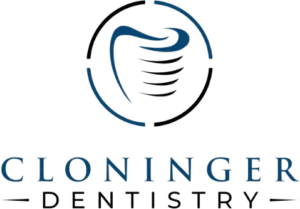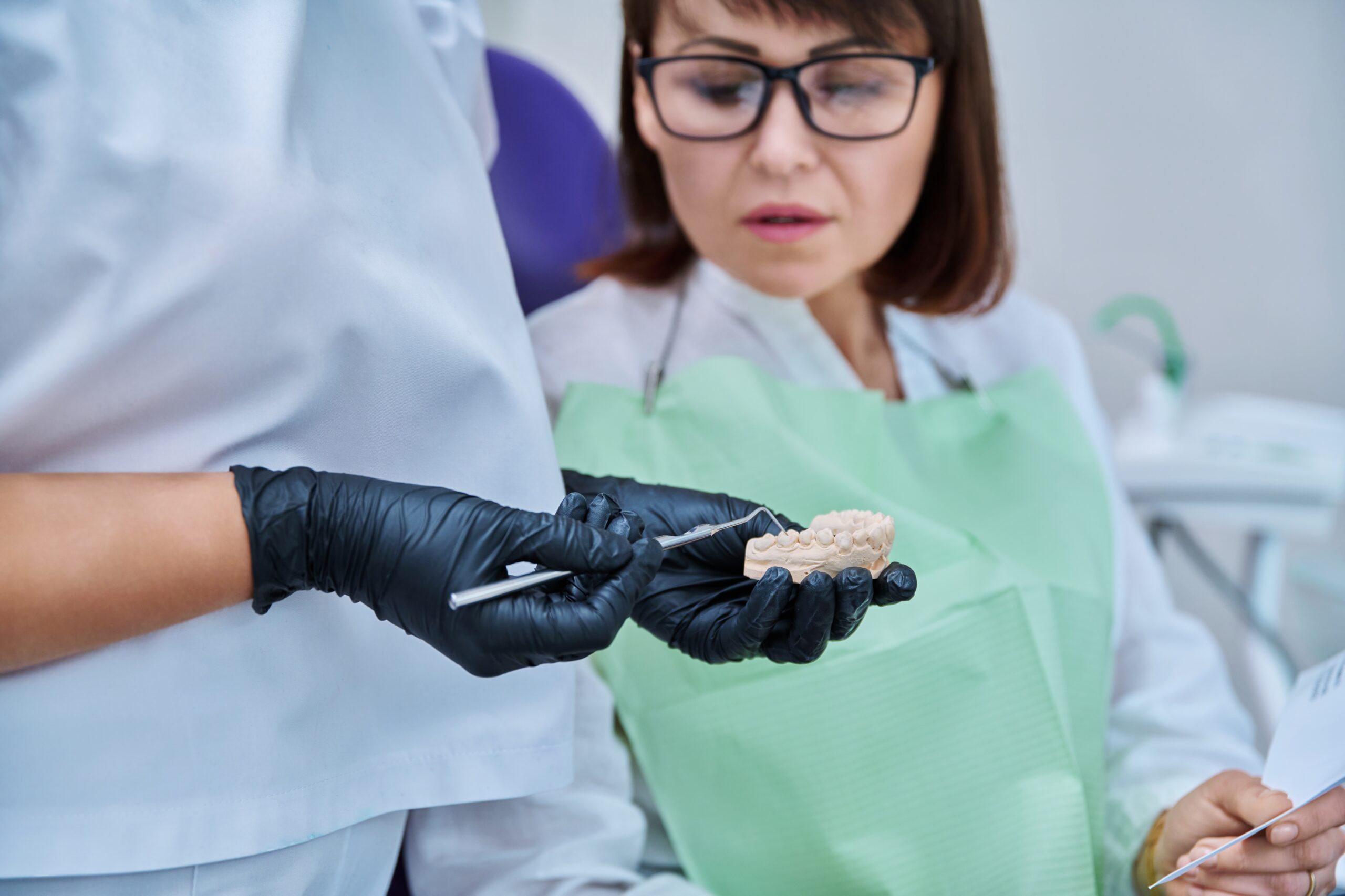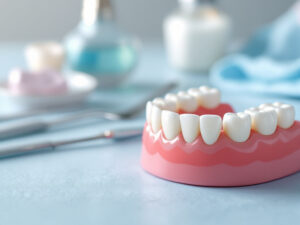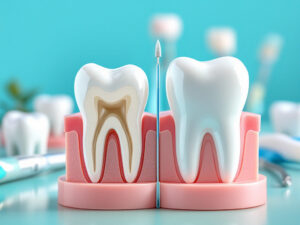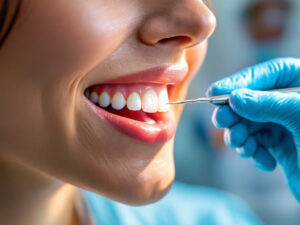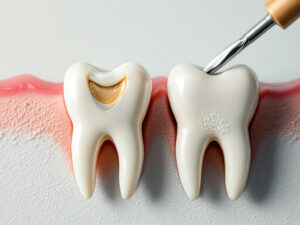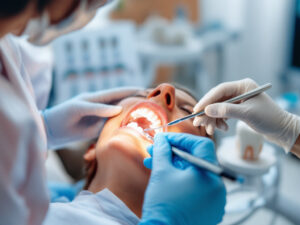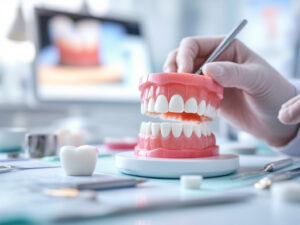Bone grafting ridge preservation is a vital step in protecting your dental health by preserving your jawbone’s shape and density after tooth loss or extraction. When you are exploring your options for family dental care, you want a practice that addresses your unique challenges and provides the support necessary for lasting results. At Cloninger Dentistry, we believe in offering you a supportive environment and tailored treatment programs for every stage of your dental journey, from routine preventative hygiene to advanced cosmetic procedures. In this post, you will discover how bone grafting ridge preservation works, why it matters, and how our comprehensive care can help you achieve long-term oral health.
Recognize the impact of tooth loss
When you lose a tooth, the consequences often go beyond a simple gap in your smile. Your jawbone, also known as the alveolar ridge, is significantly affected once a tooth and its root are removed. This biologic phenomenon, called resorption, causes the surrounding bone to shrink over time. According to a systematic review, up to 63% of horizontal bone loss can occur in the first three to six months after extraction (Decisions in Dentistry). In some cases, as much as 50% of the ridge width may be lost within the first year.
The problem with bone loss is not limited to aesthetics. A weaker jawbone can compromise neighboring teeth, reduce your eligibility for dental implants, and even affect your facial structure. In addition, tooth loss has a ripple effect on your dietary choices. Hard or crunchy foods may become difficult to chew, and you might favor softer alternatives. Over time, this can influence your overall nutrition. Addressing these concerns early through bone grafting ridge preservation can help mitigate resorption and give you the foundation you need for stable implants or other restorative procedures.
At Cloninger Dentistry, we understand that each patient faces unique challenges. Whether you have lost a tooth due to infection, trauma, or decay, our goal is to offer an individualized plan that not only restores your smile but also prevents long-term bone deterioration. The process starts with evaluating your jaw’s current condition and discussing the best way to halt resorption and strengthen your future results.
Explore bone grafting ridge preservation
Bone grafting ridge preservation is a procedure performed shortly after tooth extraction to protect the underlying bone structure. Its primary objective is to fill and seal the empty socket, preventing the collapse of the bone and soft tissue that naturally occurs once a tooth is removed. By preserving valuable bone, you reduce the likelihood of significant post-extraction resorption and help ensure that you can receive a stable dental implant or other restorative treatment later.
According to the Cleveland Clinic, more than two million dental bone grafts are performed worldwide every year, highlighting how common and beneficial this approach can be (Cleveland Clinic). Bone grafting is used in areas of insufficient bone mass, often due to conditions like gum disease or the simple lack of a tooth’s root. By placing a grafting material into the socket immediately after an extraction, you effectively lay the groundwork for denser, healthier bone growth.
During this process, your dentist may use autografts (bone from your own body), allografts (donor-sourced bone), xenografts (animal-sourced material, commonly bovine), or synthetic grafting substances like putty or gels. Each material has its strengths in terms of promoting bone regeneration, and the choice depends on factors such as how extensive the bone loss is, your overall health, and personal preferences. Whichever option you choose, the ultimate purpose is to keep your jawbone stable, strengthen it for upcoming treatments, and maintain the contour of your facial features.
Understand the grafting process
Bone grafting ridge preservation can typically be completed at the same time as your tooth extraction. Your dentist will evaluate the extraction site, ensuring no infection or damage interferes with placing the bone graft. Once the tooth is removed, the socket is meticulously cleaned, and the chosen bone graft material is packed into the empty space. A barrier membrane is often placed over the graft to seal it in and protect it against bacteria, saliva, and other external elements that could affect healing.
Research indicates that using a membrane can significantly aid in reducing horizontal and vertical ridge resorption (NCBI). Not only does it help secure the new bone material, but it also blocks unwanted tissues from a chance to grow into the site. Over time, the natural healing process integrates the graft with your existing bone, eventually leading to a denser jaw ridge.
Here is a brief overview of key steps in the grafting process:
- Extraction: Your tooth is gently removed, taking care not to damage surrounding structures.
- Site preparation: The socket is cleaned, and any infected or dead tissue is removed.
- Graft placement: Your dentist positions the graft material to fill the space and shape the socket.
- Membrane coverage: A collagen membrane or similar top-layer barrier is placed to protect the graft.
- Suturing: The area is sutured to keep the material in place and allow healing to begin.
Most individuals report minimal discomfort after the procedure. Cloninger Dentistry offers sedation choices like sedation dentistry service or nitrous oxide sedation for anxious patients, ensuring the entire process is as stress-free as possible. Our practice provides comprehensive care so you can have a safe, smooth experience from start to finish.
Consider the key benefits
Bone grafting ridge preservation confers a number of advantages that can drastically influence your oral health and the longevity of any future restorations:
- Retaining natural contours: Losing bone in your jaw can alter your facial structure subtly but significantly. Preserving bone volume supports a more youthful appearance.
- Ensuring implant eligibility: Having adequate bone mass is critical to anchor dental implants securely. By preserving your ridge, you improve your chances of a successful dental implant consultation later on.
- Enhancing stability: Even if you do not choose an implant, ridge preservation can help support neighboring teeth and prevent them from shifting into the empty space.
- Simplifying future procedures: A stable ridge often means less invasive treatments. This reduces cost, complexity, and healing time for subsequent interventions.
- Supporting better nutrition: When you have a strong jawbone, you can maintain a broader diet, including healthy crunchy or fibrous foods.
Furthermore, alveolar ridge preservation techniques can reduce the possibility of needing second, more extensive grafting procedures in the future. By addressing the issue early, you protect your oral health and streamline any upcoming family or cosmetic dental care you may require.
Choose Cloninger Dentistry
One of the most important decisions for bone grafting ridge preservation is selecting the right dental provider. At Cloninger Dentistry, we believe in offering a supportive environment where you have access to individualized plans. We tailor treatment programs to match your unique needs, from simple socket preservation to advanced bone augmentation procedures. Our approach is grounded in empathy and knowledge, acknowledging any anxiety you may feel and giving you the confidence you need to proceed with a proactive decision.
We pride ourselves on:
- A dedicated team: Our specialists stay informed on evidence-based practices, advanced surgical techniques, and the latest materials for grafting to guarantee quality care.
- Comprehensive care: In addition to protecting your jaw, we support your smile goals. Whether you want a future cosmetic smile makeover or esthetic dental crown placement, we provide the treatments you need under one roof.
- State-of-the-art technology: Advanced diagnostic tools help us assess the condition of your jaw with precision. This ensures accurate treatment planning for procedures like implant placement service.
- Personal comfort: Our sedation options, like sedation for anxious patients, help you relax during the procedure. From the moment you walk through our doors, our team is ready to address your comfort concerns.
Beyond the procedure itself, we stand by you with the support necessary for lasting recovery. We understand the importance of synergy between each step of your healthcare journey, which is why we integrate preventive services, restorative care, and cosmetic treatments. Our goal is to be your lifetime partner in oral wellness.
Prepare for the procedure
If you have an upcoming tooth extraction, it is wise to discuss bone grafting ridge preservation at your consultation. Preparation for the grafting procedure is typically straightforward, especially if you are in good overall health. Here are a few considerations before you begin:
- Medical history: Share any current medications, allergies, or chronic conditions with your dentist, as some might influence your treatment plan or sedation options.
- Focus on oral hygiene: A clean mouth encourages smooth healing. Follow your dentist’s instructions on brushing and rinsing before surgery. You may receive an antibacterial rinse or other specific products to use.
- Plan for downtime: Although most patients resume normal activities within a day or two, scheduling a light workday or minimal activities helps you rest.
- Consider sedation preferences: If dental procedures create anxiety for you, request sedation options, such as iv sedation dentistry, to help you relax. Your dentist will determine the right level of sedation for your comfort.
Because each situation is unique, your dental professional may suggest different protocols. This might include taking prescribed medication to minimize the risk of infection or adjusting any blood-thinning medications, if medically approved. Rest assured, our team at Cloninger Dentistry will guide you through every step, offering clarity and reassurance.
Manage recovery effectively
After your bone grafting ridge preservation procedure, proper aftercare is essential for long-lasting success. Your recovery timeline will differ depending on how large the extraction site is, the materials used, and your overall health.
Typical post-procedure guidelines include:
- Protect the surgical area: Avoid vigorous rinsing or spitting for the first 24 hours. This helps maintain the stability of the graft material and clot.
- Maintain oral hygiene: Gently brush and floss the rest of your mouth, but be cautious around the treatment site. You may also receive a prescription antimicrobial rinse that lowers infection risks.
- Watch your diet: Stick to softer foods for a few days, and opt for lukewarm or cool items. High temperatures and hard foods can disturb the graft.
- Avoid tobacco and alcohol: Smoking can impede blood flow, while alcohol can irritate the gums. Both habits significantly slow healing and increase infection risk.
- Take medications as directed: If your dentist prescribes antibiotics or pain relievers, follow the dosing instructions carefully. Completing the full course of antibiotics is essential for infection control.
At Cloninger Dentistry, we will schedule follow-up appointments to monitor how well your new bone is integrating. The healing process can take several months, though most initial discomfort resolves within one to two weeks. Maintaining excellent oral hygiene and overall wellness fosters a positive outcome. By the time the graft fully integrates, you will typically have the firm jaw support needed for implants or other restorative treatments.
Frequently asked questions
Below are answers to some of the top questions people often have about bone grafting ridge preservation:
- “How soon after an extraction should I receive the graft?”
- In most cases, your dentist places the bone graft immediately following your tooth extraction. This timeliness helps preserve the maximum amount of bone and minimizes resorption.
- “Can I get a graft if I already had my tooth extracted months ago?”
- If it has been a while since your extraction and you have experienced significant bone loss, a secondary grafting procedure may still be possible. However, immediate preservation often yields simpler and more predictable outcomes.
- “How long does it take for the graft to heal?”
- Initial healing can take about one or two weeks, but the bone graft itself typically requires several months to fully integrate with existing bone. Some individuals may need four to six months before they are ready for an implant.
- “Is the bone grafting procedure painful?”
- Most patients experience manageable discomfort. We offer sedation methods like sedation for anxious patients or nitrous oxide sedation to keep any pain or anxiety at bay. Over-the-counter pain medications can often address mild post-procedure soreness.
- “What if I’m not planning on dental implants?”
- Even if you are not certain about implants, preserving the bone offers benefits such as maintaining facial structure and preventing further shifting of nearby teeth. It also keeps your options open in case you change your mind about implants or other restorative treatments later on.
Take the next step
Your dental health plays a fundamental role in your overall well-being, and bone grafting ridge preservation can be a key factor in safeguarding your smile. By fortifying the jawbone immediately after tooth removal, you reduce the risk of long-term bone deterioration and ensure your mouth remains ready for possible restorations, whether that means implants, dentures, or other advanced procedures.
At Cloninger Dentistry, we want you and your loved ones to feel confident in your choice of family dental care. From tooth extractions and preventive cleanings to cosmetic dental evaluation and clear aligner consultation, our goal is to provide a tailored treatment program that addresses your specific needs and concerns. We emphasize a supportive environment and comprehensive care, ensuring that you have the foundation necessary for a healthy mouth and a vibrant smile.
If you are ready to explore a procedure that sets you up for lasting oral health or simply want more advice about protecting your jawbone, our expert team is here to help. Schedule a consultation to discuss bone grafting ridge preservation, and take the first step toward a stronger, healthier future. We look forward to being your partner in oral wellness.
